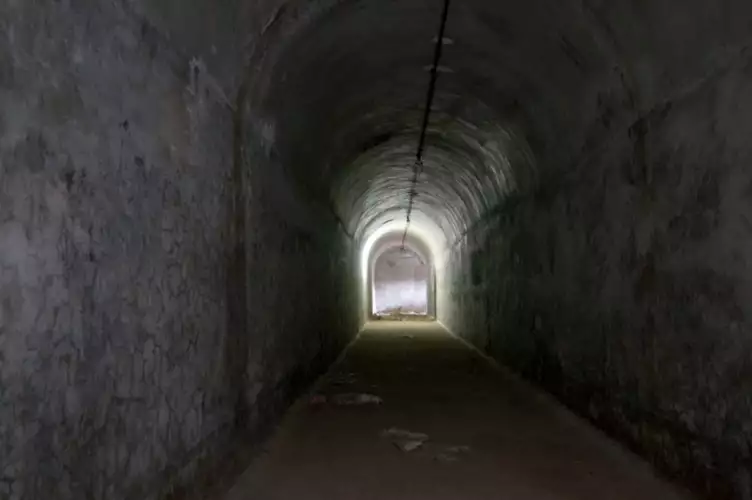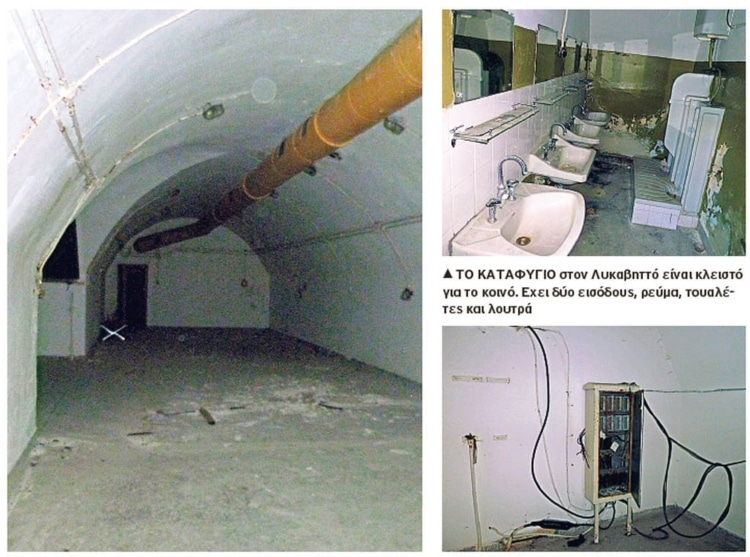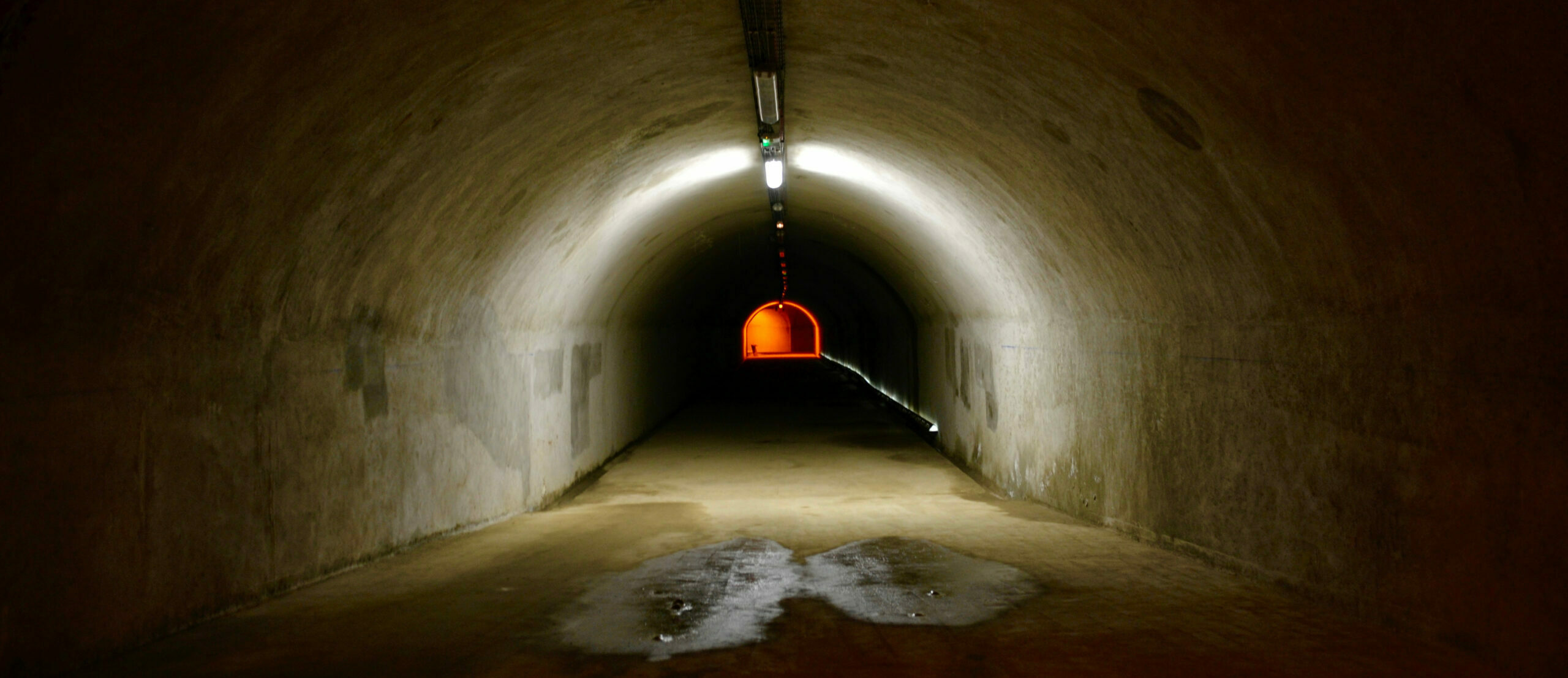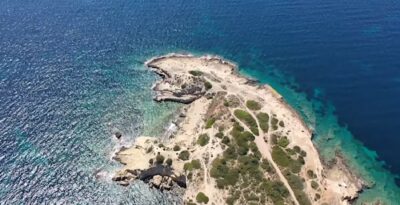The underground and unknown Athens. This is how one could describe what lies beneath the capital. The places above which we have walked hundreds of times without knowing what is there. We are speaking about the “unknown city” under Athens. The shelters. A “city” that few know.
This small new city of Athens was created during the Second World War. Athens was bombed and the population should have places to protect itself. This is how the shelters under Athens were created. It is essentially a network of labyrinthine corridors and chambers that would protect the world from air strikes and beyond. Some larger and some smaller spaces that changed shape many times use and even constituted places of torture.
The known and the unknown shelters in Athens
The history of the shelters is great, as is their number. Marshal Papagos had mentioned 400 public shelters built by the state. In addition to these, however, it is considered that there are several thousand private shelters which were built in apartment buildings and other private spaces due to the mandatory law of the Metaxa government. However, we cannot accurately know the number of those who were actually manufactured and what condition they are in today.
Extensive registering and analysis for shelters has been done by the researcher Konstantinos Kyrimis who has also written a related book (The Shelters of Attica). In the last eight years he has visited about 80 shelters in Athens and Piraeus. Each of them has its own story to tell. Some of these shelters were for protection but at other times they were torture chambers. That’s because their use has changed many times over the years. Konstantinos Kyrimis himself has stated in lectures and interviews: “From 1936 to December riot events (armed conflicts that took place a little after the Second Worrld War between the Greek Army of the Resistance and the English army that helped the then Government) the shelters were transformed from protection places for the population, to torture centers of the occupying forces, and from protection places of the inhabitants of Piraeus from the allied bombardment of ’44 they became fields of conflict in the December riot events and also protected and hidn the civilians”.

He also mentions that the only shelter that is maintained is that of 4 Korai Street (it is near the University of Athens), as a site of historical memory. But even this is not maintained as a refuge, but as a place of detention for the Germans. But where are there shelters? Everywhere! In Athens (Lykavittos hill, Ardittos hill, Polygono district, etc.), Piraeus (Proph. Elias hill, Kastela district, Drapetsona district, etc.), in the southern suburbs (Ellinikon district, Voula district, Glyfada district), in the north (Kifisia district, Papagos district, Psychiko district), in Cape Sounio , Rafina (a small town in the suburbs) Among these shelters there are some such as τηατ οφ “Great Britain Hotel”, the National Insurance Hall, the Bank of Greece, the Army Share Fund and the basement of the Supreme Court of Areios Pagos.
The biggest shelters
One of the largest shelters in the unknown city under Athens is that of Lycabettus hill. This one extends to 500 square meters. The underground shelter of Lycabettus hill was built around 1936, near the cave-church of Agioi Isidoroi. It extends to a depth of 100 meters in the rock, has two entrances, and is larger and in better condition than the most famous but abandoned shelter of Ardittos hill. Preserved, freshly painted, but with the obvious signs of time, it still has electricity, toilets and baths.
Its facilities also include: two large halls and some smaller ones, corridors, a machine gun nest, storage areas, ventilation appliances and ducts, tanks, tables and electric switches, and a phone-call center of that time. Both entrances end up in the main large hall where the Anti-Aircraft Defence Headquarters was housed for the needs of the 1940 war. More specifically, its initial use was military and began when the Air Alarm Service and the Radio Station, the Navy’s Radio Telegraph Division, were installed there in 1936 or 1937.

On the other hand, the shelter on Karageorgi Serbia is about 400 sq.m. with 20 auxiliary spaces. During the occupation, German soldiers built military-style shelters in the center of the capital and in coastal areas, for fear of an Allied landing. In the 1950s, other shelters were built, but not as reinforced as the old ones, for fear of the Cold War.
The shelter of Ardittos hill was commandeered by the Germans during the war and at its end was used as a base of the resistance. During King Paul’s reign it was a royal refuge and perhaps because of this ithere is a roumor that it communicates underground with the royal palace.
Do the shelters communicate with each other?

As Mr. Mr. Kyrimis says, that is not the case. The fact that the shelters are labyrinthine and dark has often given exhortations for speculation and paraphilology. Τhey were built with the goal not to get people from one to the other, but to protect and be able to get out to a nearby location safely.
In addition to those still belonging to army or navy services, there are others, such as shelters on the mountain slopes, which belong nowhere and the responsibility for cleaning them lies with the police. No one seems to even know their exact number and their concrete entrance crumbles as time goes by.



